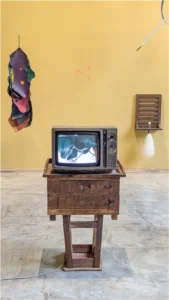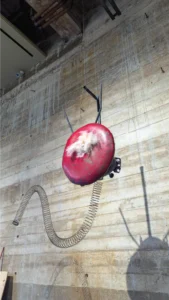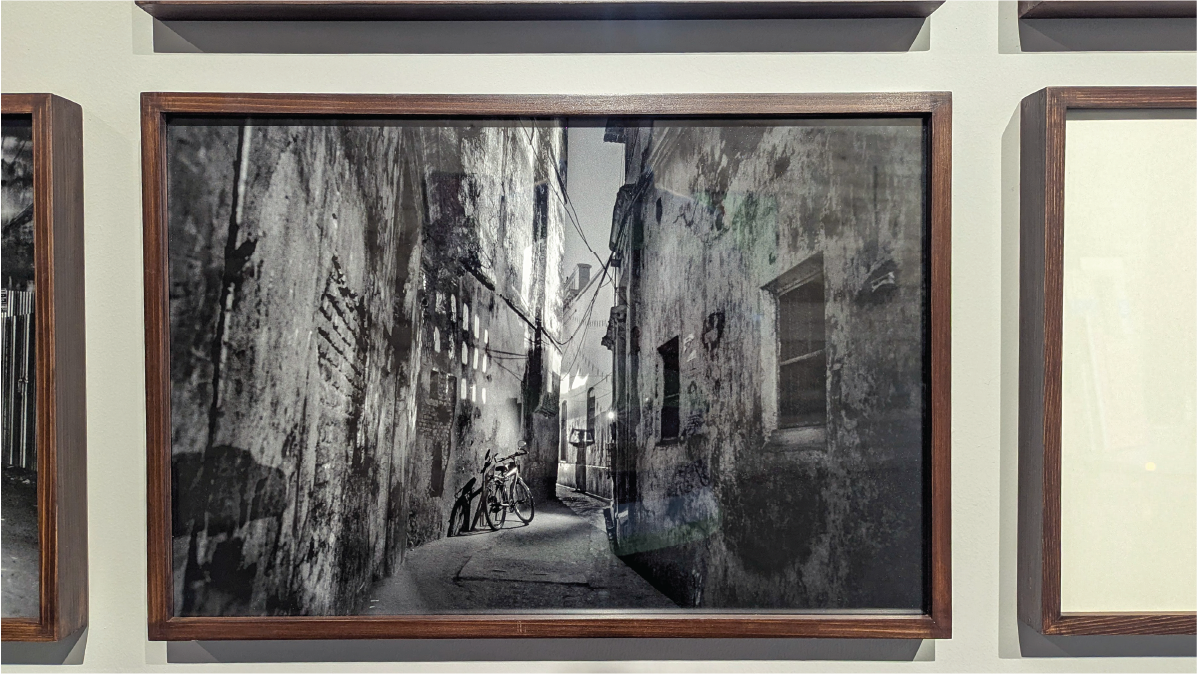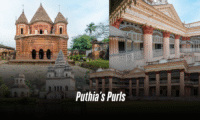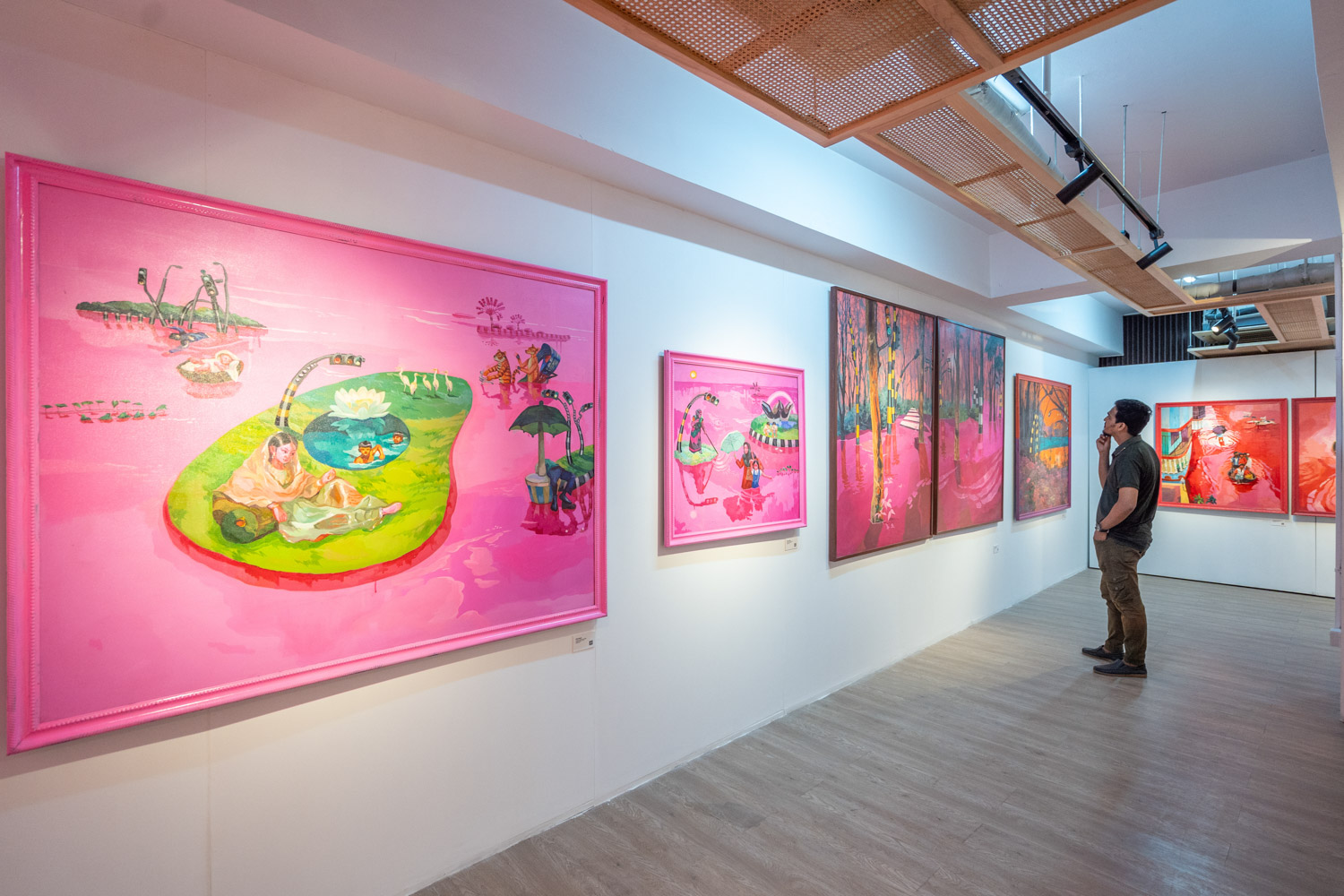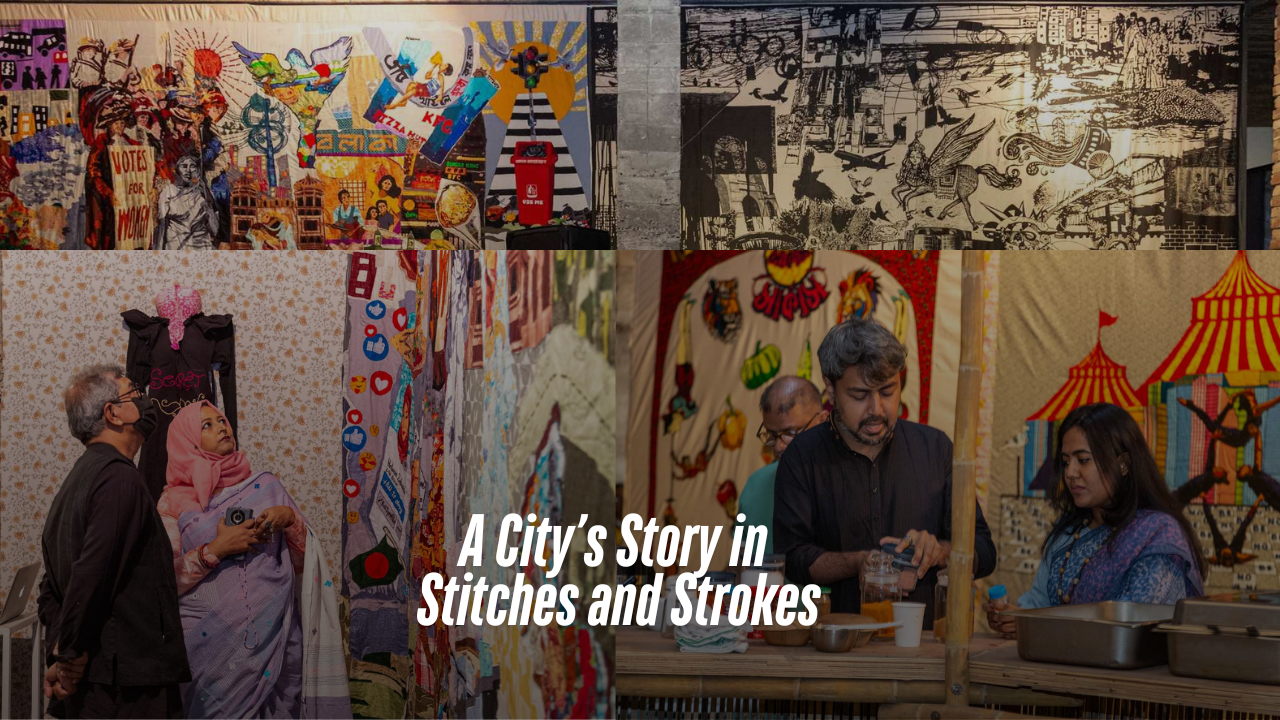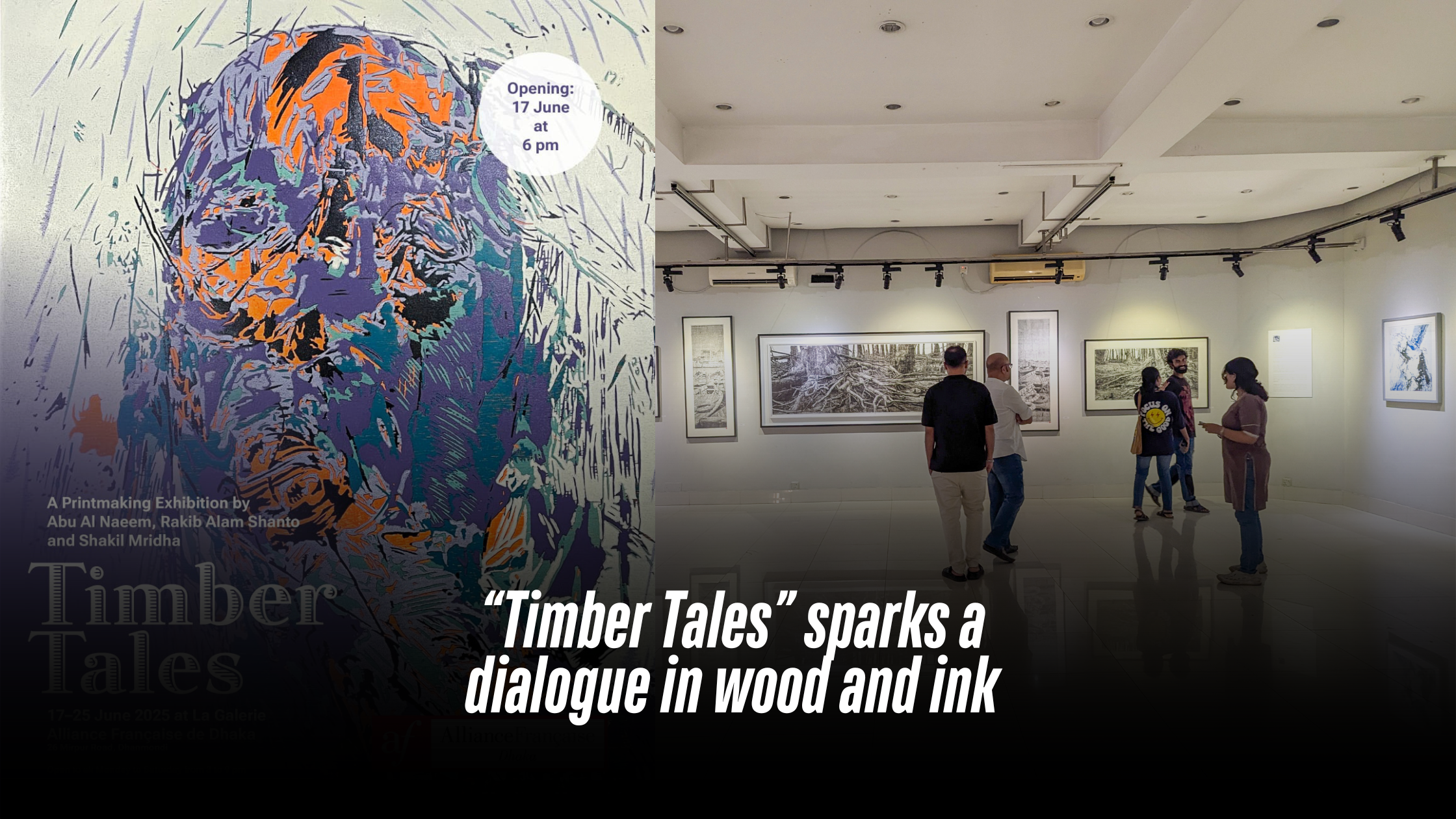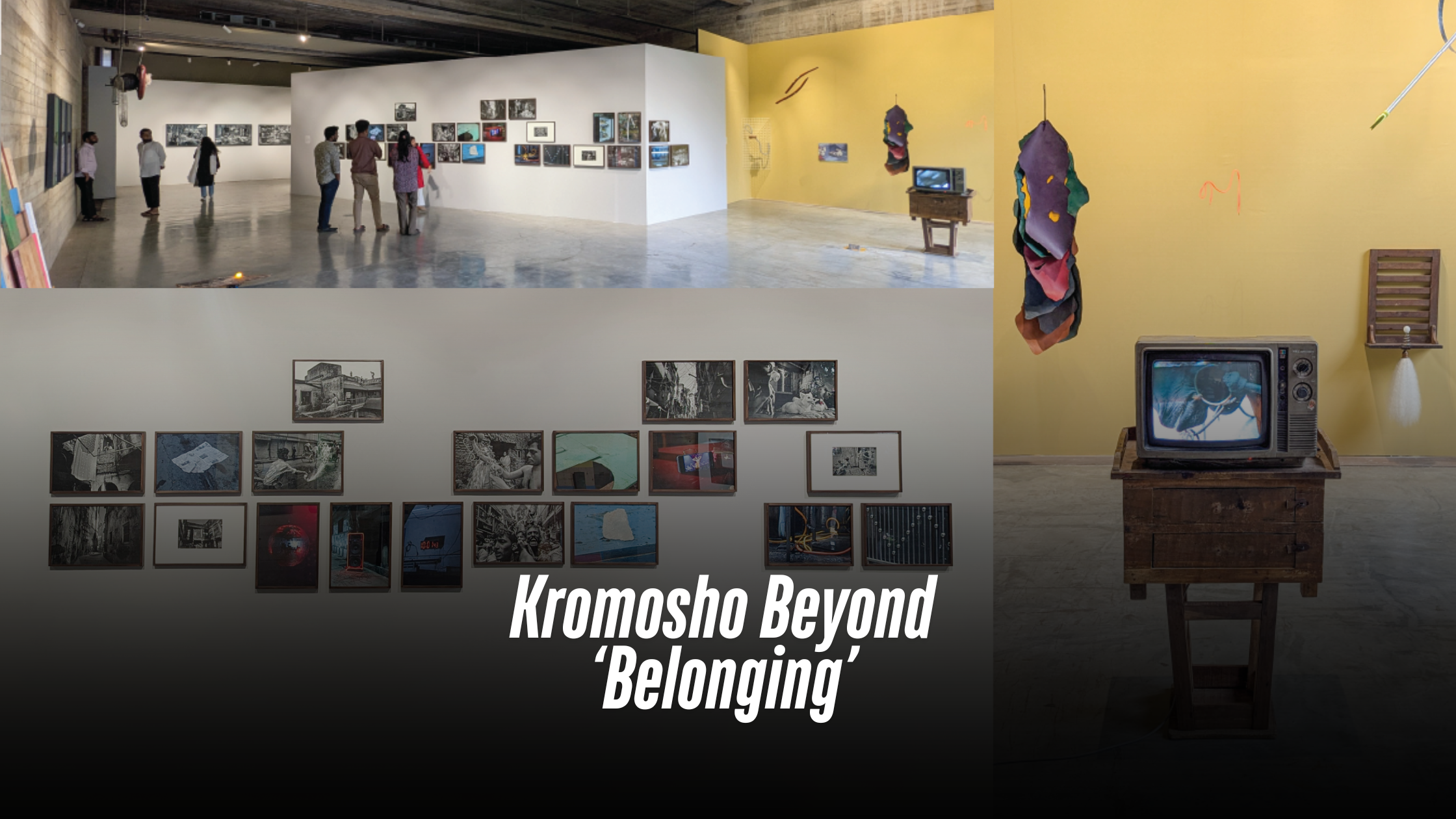
In the mid-2000s, a young- Munem Wasif began exploring the hidden corridors of Old Dhaka alongside his trusty, timeworn companion, Zenit—a mechanical relic from the Soviet era. This journey eventually culminated in his 2012 photographic masterpiece Belonging, a work that revolutionized visual storytelling in Bangladesh’s art scene. Much like the dark, ever-flowing waters of the Buriganga that have witnessed Dhaka’s transformation, Wasif’s artistic journey has traversed many phases—each urging audiences to look beyond the surface. From `Seeds Shall Set Us Free’ to `Collapse’, his work continuously invites deeper reflection, all while retaining an unbreakable bond with Old Dhaka.
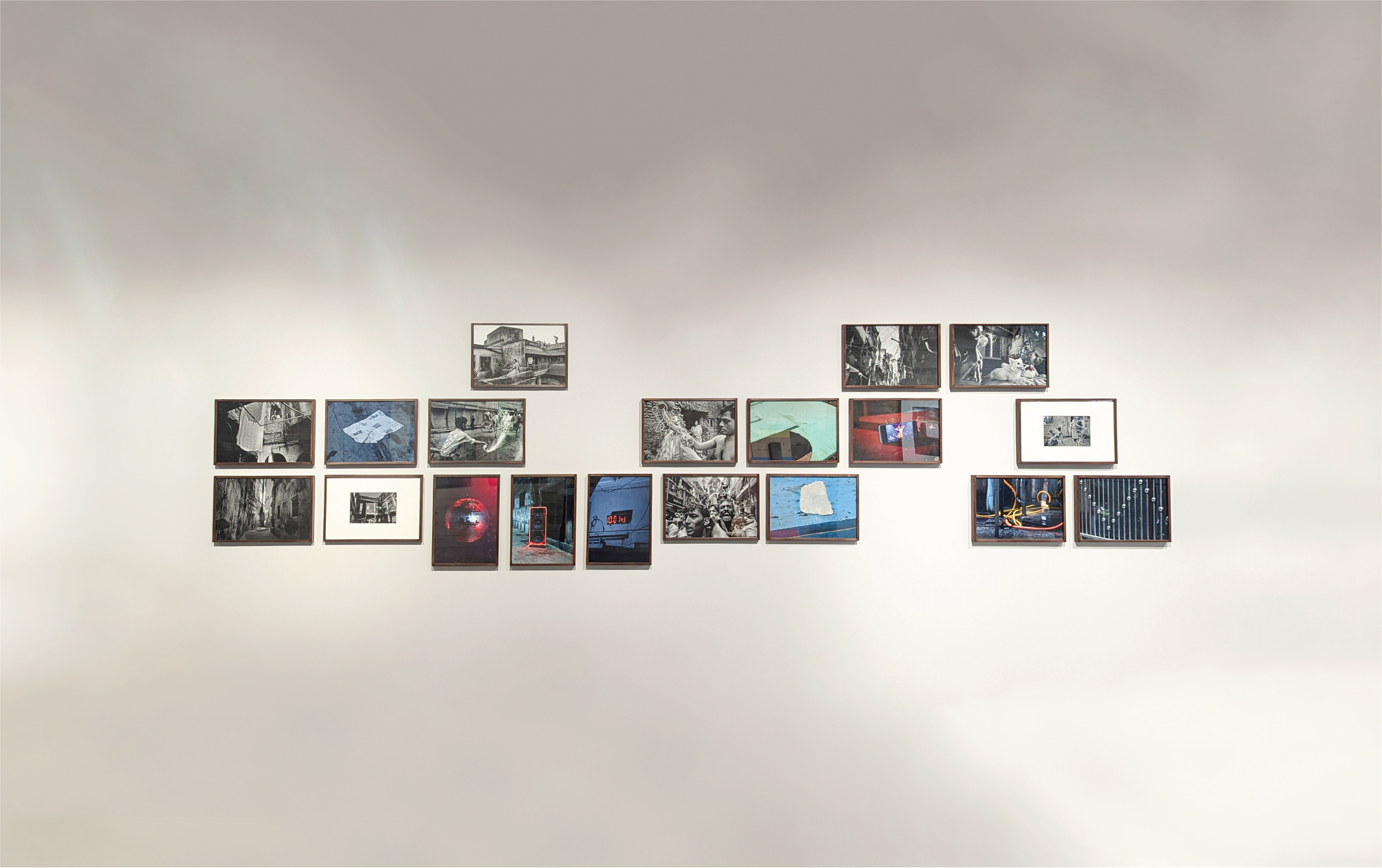
After nearly 16 years, Munem Wasif returns to Dhaka with a solo exhibition titled `Kromosho’, now on display at Bengal Shilpalay in the capital. The show, which runs until May 31, 2025, features contributions from curatorial advisor Tanzim Wahab, project assistant Iftekhar Hassan, and architectural designer Dehsar Works, and is open to everyone.
Reflecting on his previous work, Wasif explained, “I felt something was lacking when Belonging was released. It merely touched upon the surface of the people and their celebrations—I couldn’t capture the core of their daily lives, the very ‘life’ of Puran Dhaka. That realization gave birth to Kheya’l. This exhibition is a testament to my transformation over the past two decades.”
The opening at Bengal Shilpalay buzzed with energy as art enthusiasts gathered to witness what promises to be one of the most memorable exhibitions in recent memory. Kromosho unfolds in three movements: it begins with Wasif’s ethereal black-and-white photographs from the Belonging era, which converse with his fresh, vibrant color works from Stereo. This juxtaposition creates a dynamic tension between past and present, memory and reality. In Kheyal, a cinematic meditation captures the pulsing rhythm of Old Dhaka, while the installations Shamanno and Paper Negative blend documentation with imagination, challenging our perceptions of what is real versus what is remembered.
Critically, Old Dhaka may seem like a ticking time bomb—overcrowded, decaying, and a bitter relic of collective neglect. Yet, Wasif’s work reveals the hidden vitality amid this chaos, unearthing a poetry rarely seen by the casual observer. Kromosho does more than display images of a place; it captures its very essence. The exhibition serves as a mirror, prompting us to consider what we preserve and what we forsake in our relentless march toward modernity. In an age of rapid urbanization and cultural amnesia, Wasif’s work stands as both an archive and an elegy—an enduring reminder that some stories transcend what can be captured by cameras or words. To fully appreciate its depth, one must experience it both in person and with an open, reflective heart.
As visitors wander through the gallery, they are invited not only to observe but also to introspect. In this way, Kromosho transcends the role of a mere art exhibition—it becomes a conversation, a homecoming, and ultimately, a call to bear witness.



